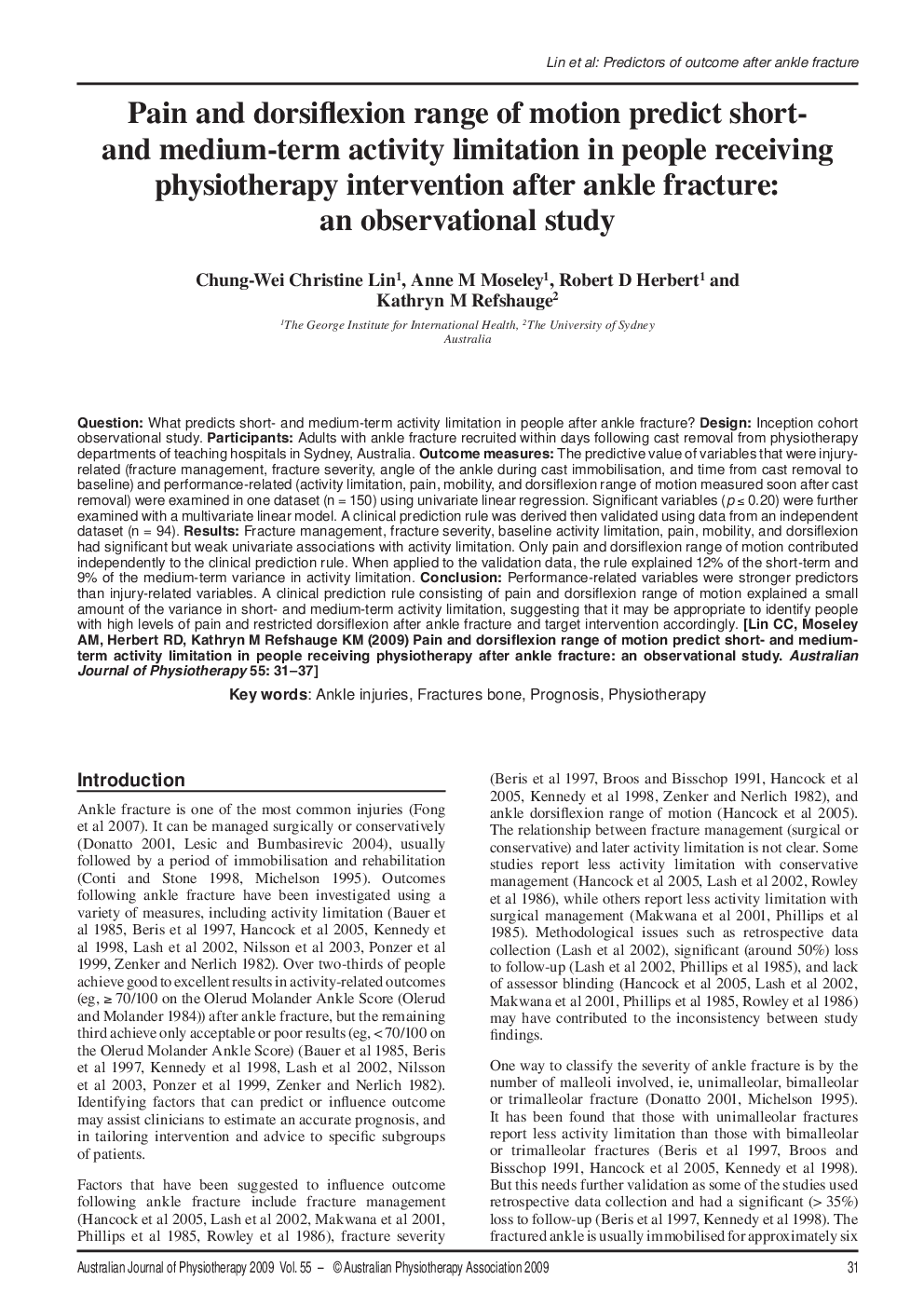| Article ID | Journal | Published Year | Pages | File Type |
|---|---|---|---|---|
| 2700967 | Australian Journal of Physiotherapy | 2009 | 7 Pages |
QuestionWhat predicts short- and medium-term activity limitation in people after ankle fracture?DesignInception cohort observational study.ParticipantsAdults with ankle fracture recruited within days following cast removal from physiotherapy departments of teaching hospitals in Sydney, Australia.Outcome measuresThe predictive value of variables that were injury-related (fracture management, fracture severity, angle of the ankle during cast immobilisation, and time from cast removal to baseline) and performance-related (activity limitation, pain, mobility, and dorsiflexion range of motion measured soon after cast removal) were examined in one dataset (n = 150) using univariate linear regression. Significant variables (p ≤ 0.20) were further examined with a multivariate linear model. A clinical prediction rule was derived then validated using data from an independent dataset (n = 94).ResultsFracture management, fracture severity, baseline activity limitation, pain, mobility, and dorsiflexion had significant but weak univariate associations with activity limitation. Only pain and dorsiflexion range of motion contributed independently to the clinical prediction rule. When applied to the validation data, the rule explained 12% of the short-term and 9% of the medium-term variance in activity limitation.ConclusionPerformance-related variables were stronger predictors than injury-related variables. A clinical prediction rule consisting of pain and dorsiflexion range of motion explained a small amount of the variance in short- and medium-term activity limitation, suggesting that it may be appropriate to identify people with high levels of pain and restricted dorsiflexion after ankle fracture and target intervention accordingly.
